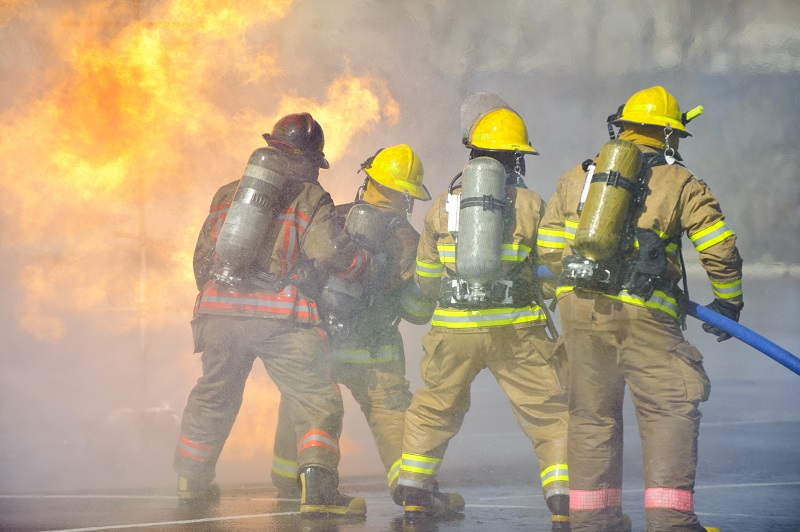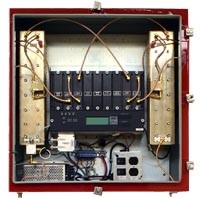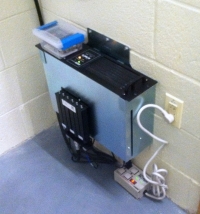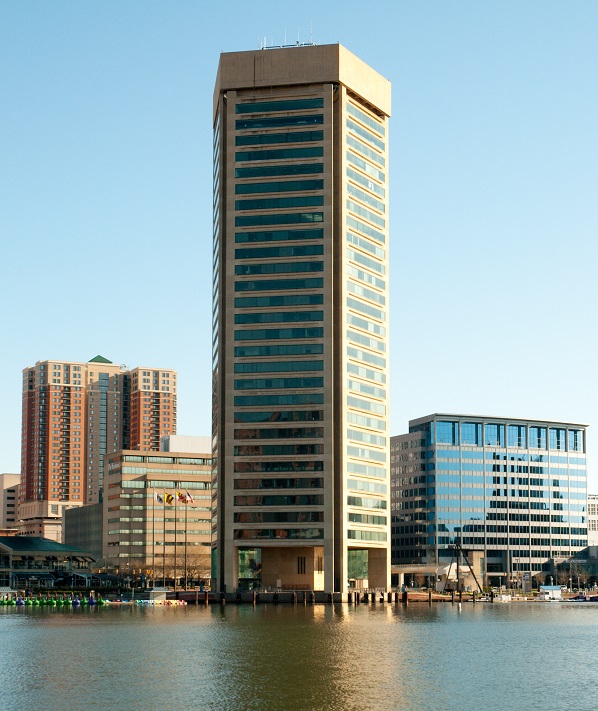IN-BUILDING LMR COVERAGE FOR PUBLIC SAFETY (SIGNALBOOSTERS/DAS)
BECAUSE ON-STREET COVERAGE IS NOT ENOUGH!
 Imagine the situation: A team of firefighters rushes into a burning building, putting their lives on the line to save others. They find survivors huddled on the 10th floor but need help to evacuate them to safety. They call for reinforcements on their portable radios but no one hears them. With smoke enveloping the floor and the building structure weakening, seconds count – but life-saving communications have been lost.
Imagine the situation: A team of firefighters rushes into a burning building, putting their lives on the line to save others. They find survivors huddled on the 10th floor but need help to evacuate them to safety. They call for reinforcements on their portable radios but no one hears them. With smoke enveloping the floor and the building structure weakening, seconds count – but life-saving communications have been lost.
One of the lessons reinforced by the 9/11 terrorist attacks is that reliable in-building public-safety radio coverage is vital to saving lives. That’s why Recommendation 22 of the National Institute of Standards and Technology's (NIST) World Trade Center report states:
“NIST recommends the installation, inspection, and testing of emergency communications systems, radio communications, and associated operating protocols to ensure that the systems and protocols: (1) are effective for large-scale emergencies in buildings with challenging radio frequency propagation environments; and (2) can be used to identify, locate and track emergency responders within indoor building environments and in the field.”
Today, there are more wireless devices in the market than people on the planet, with many users having more than one device. Wireless technology — be it Wi-Fi, Bluetooth, cellular or land mobile radio (LMR) – the latter of which is used by public safety and many other enterprises — is the method used most often for both voice and data communications. In a growing number of circumstances, wireless is the only option because wireline service is no longer ubiquitous indoors.
As a result, wireless connectivity indoors is no longer a “nice-to-have” but a “must-have,” if only to ensure that people can call for help in case of an emergency. But wireless indoor coverage has always been a challenge. Radio signals lose strength as they encounter physical obstacles like glass, concrete, and steel. Making the challenge more difficult are advances in the energy efficiency of buildings. The designs and materials used to keep buildings warm in the winter and cool in the summer, while reducing power consumption, are also significantly more resistant to radio signals. In these energy-efficient buildings, it is no longer realistic to expect that radio signals from an outdoor tower will consistently penetrate indoors.
PROCOM HAS THE SOLUTION: OUR WELL-DESIGNED AND REASONABLY-PRICED IN-BUILDING SIGNAL ENHANCEMENT SYSTEM (SES).
 Our custom-designed SES includes reliable bi-directional amplifiers and precisely distributed antennas (DAS), all expertly-installed. With a Procom SES, first responders on the scene will communicate clearly using LMR voice and data today, with the potential to leverage Band 14 LTE and other new technologies in the future.
Our custom-designed SES includes reliable bi-directional amplifiers and precisely distributed antennas (DAS), all expertly-installed. With a Procom SES, first responders on the scene will communicate clearly using LMR voice and data today, with the potential to leverage Band 14 LTE and other new technologies in the future.
New Building Code Requirements

Government entities are increasingly requiring that Signal Enhancing Systems be installed and certified before new buildings can be occupied. Some new construction requirements, such as LEED 1 building design and the construction of “green” buildings, can increase attenuation and negatively affect the ability of communication signals to penetrate a building.
Procom's Technical Services Group can provide your organization with the needed support for in-building communications coverage. No matter the site, Procom can conduct coverage tests and signal strength measurements and, using the data collected, design, install, and activate a system that will ensure quality and reliability of coverage. Our goal is to provide the best value option for your specific needs.
BDA Facts
- BDAs are two-way amplifiers/repeaters available in a variety of gain and power options that boost and distribute a signal
- It’s common in cement and steel structures to have poor reception in certain areas where wireless signals do not penetrate (i.e., basements, stairways, tunnels, parking garages, etc.)
- BDAs installed for first responder and worker safety need to function in difficult environments such as high heat, chemical splashes, smoke, high humidity, underground tunnels, etc.
- There is a big difference between a public safety BDA (for two-way radio systems) and a cellular BDA, and they are not interchangeable
Who Needs an SES?
- Government buildings, school campuses, sports arenas, tunnels/mining operations, public venues, distribution centers, hospitals, high-rise buildings, office complexes, warehouses, and more
- Any structure where first responders, maintenance, and security personnel need to maintain constant communications
- Many localities now require BDA installation with new building construction or renovation permits
Procom can help
- Customized recommendations to achieve full communications – one size doesn’t fit all
- Free on-site consultation and evaluation to ensure in-building radio coverage in Northern VA, Baltimore, Washington, and Philadelphia
- Precision design services
- Professional installation and certification
- Maintenance contracts and follow-up inspections to ensure success




